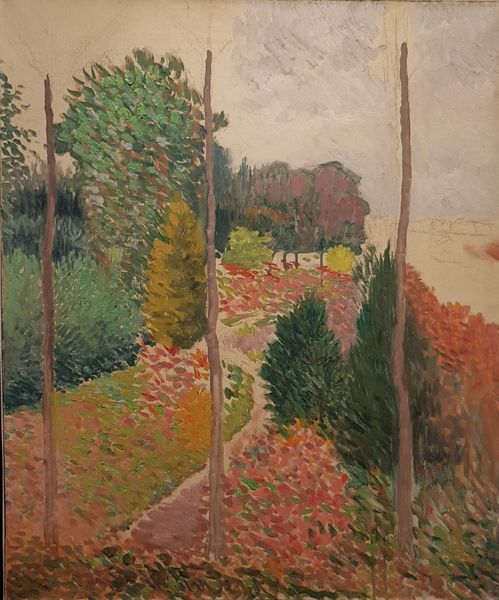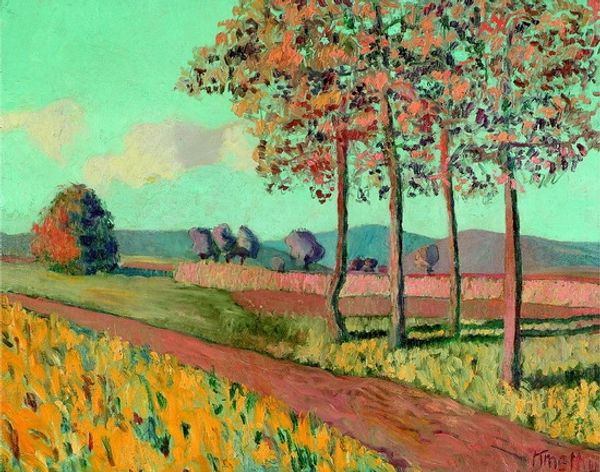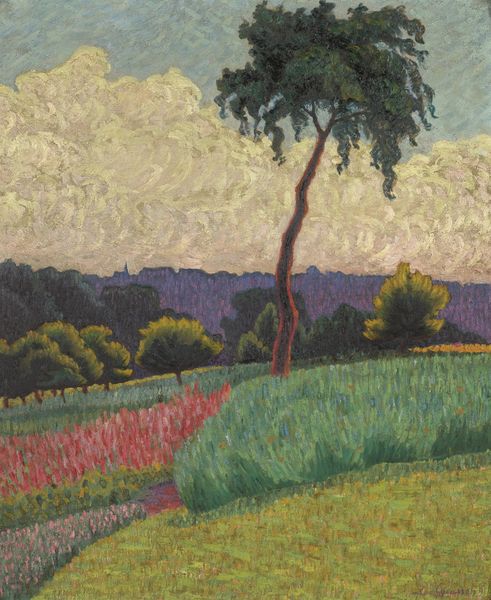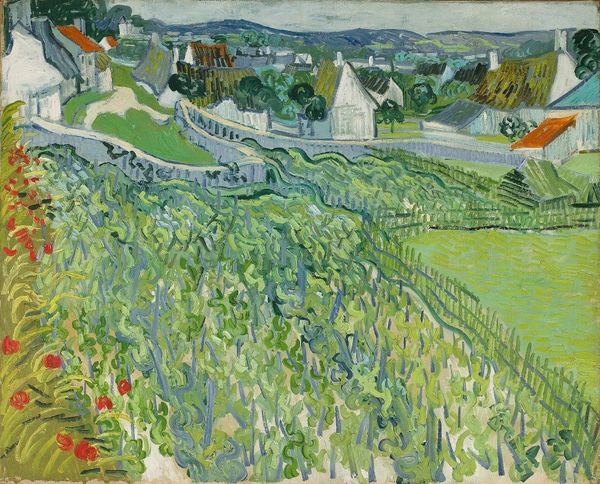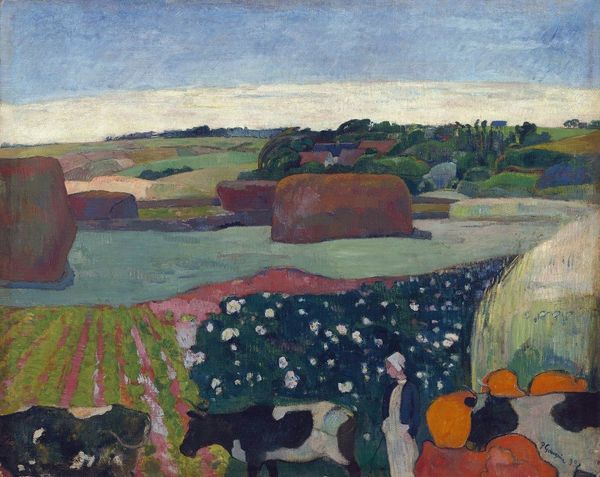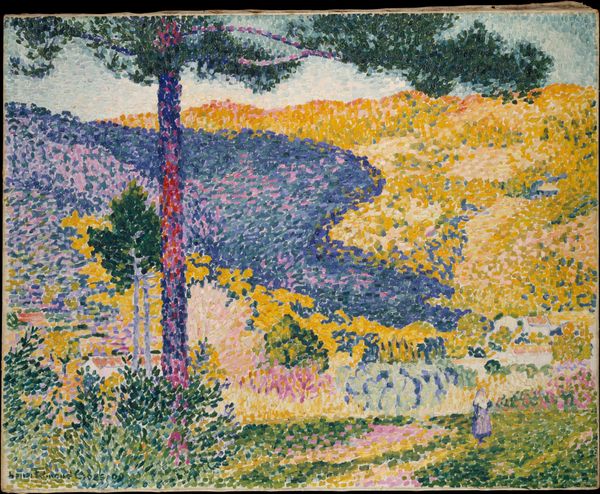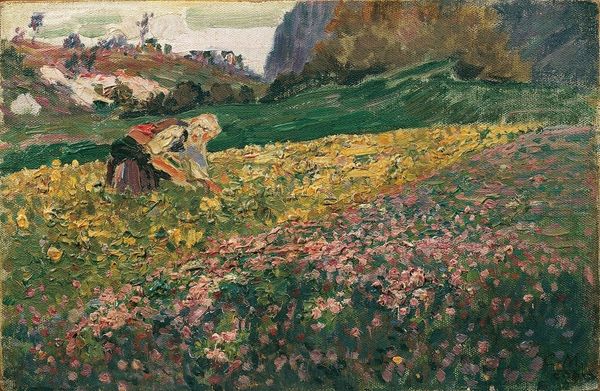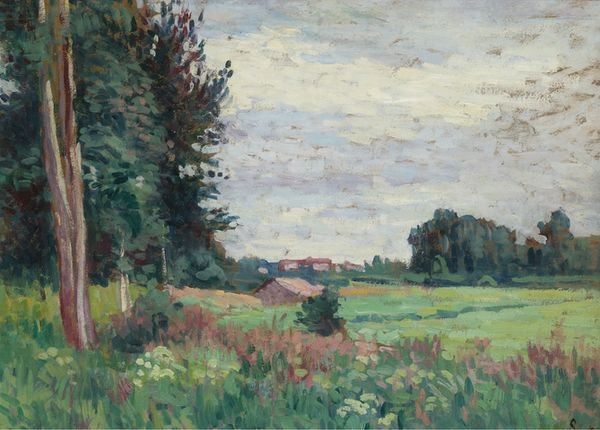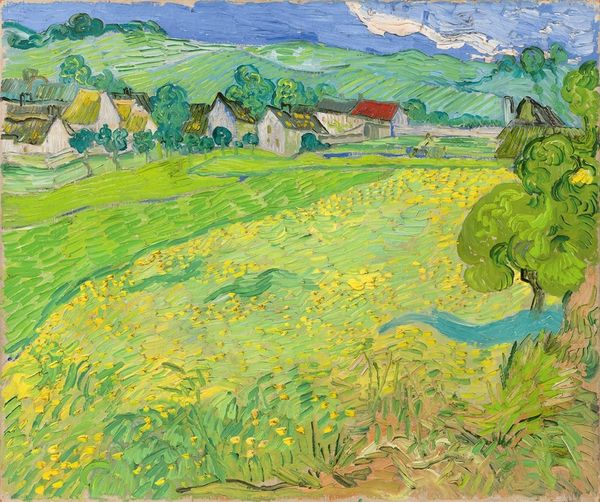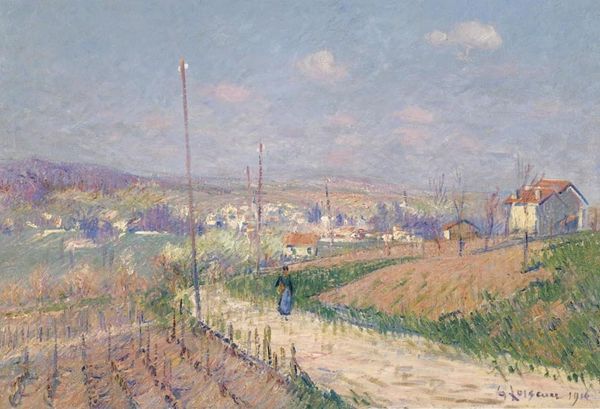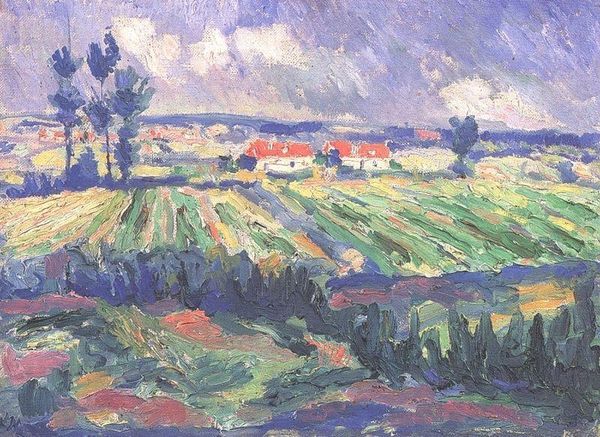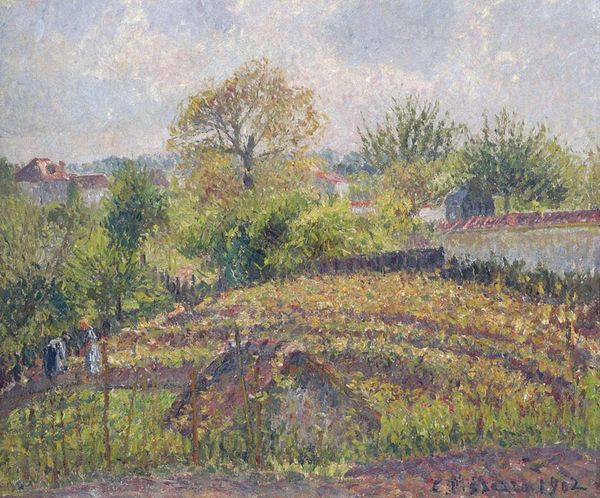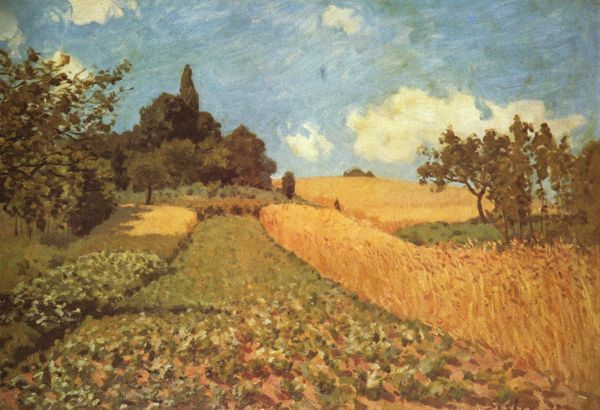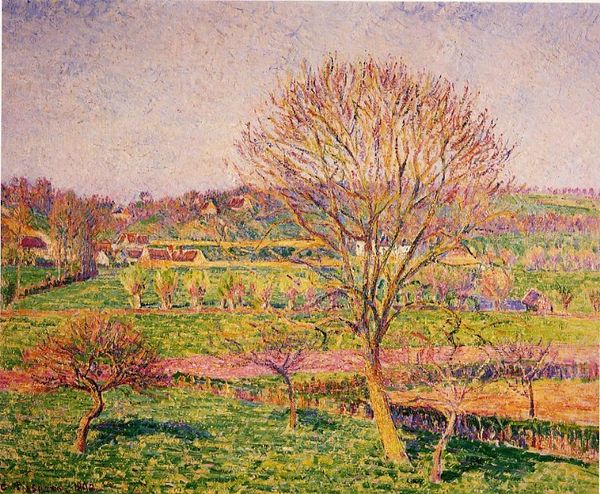
Dimensions: support: 686 x 787 mm frame: 815 x 924 x 73 mm
Copyright: CC-BY-NC-ND 4.0 DEED, Photo: Tate
Curator: Spencer Gore's "The Cinder Path," currently residing at Tate Britain, presents a captivating vista. Editor: It feels rather muted, doesn't it? A restrained palette, suggestive of a somewhat melancholic rurality. Curator: The composition directs our gaze along the path, dividing fields through subtle shifts in color and texture. Note the contrast between the worked land and the fallow. Editor: Exactly, the land is clearly being shaped and manipulated; consider the labour implied in that cultivation, the social relations embedded in its ownership and use. Curator: The application of paint, though, is quite crucial; broken strokes create a shimmering surface, dissolving firm boundaries between forms. Editor: True, but the muted color choices speak volumes about the economic realities of rural England at the time and perhaps point to its slow progress. Curator: I see a sophisticated arrangement of form and color more than a stark social commentary. Editor: Perhaps, but it's impossible to ignore the human element etched into the landscape by tilling it in this way. Curator: A compelling painting, whichever path one chooses to analyse. Editor: Indeed, a picture full of subtleties and suggestive of the quiet toil that makes up England's landscape.
Comments
tatebritain 8 months ago
⋮
http://www.tate.org.uk/art/artworks/gore-the-cinder-path-t01960
Join the conversation
Join millions of artists and users on Artera today and experience the ultimate creative platform.
tatebritain 8 months ago
⋮
In the summer of 1912 Gore went to stay in the new town of Letchworth. Here he painted some of the more avant-garde landscapes of his career, using stylised forms and vivid colours. The Cinder Path shows a place on the outskirts of Letchworth. Gore’s perspective means that the path, which is made of industrial waste, recedes vertically into the middle-distance, and the fields and hedges are arranged around it. This was one of the few British pictures exhibited in the influential Second Post-Impressionist Exhibition organised by Roger Fry in the winter of 1912. Gallery label, May 2011
